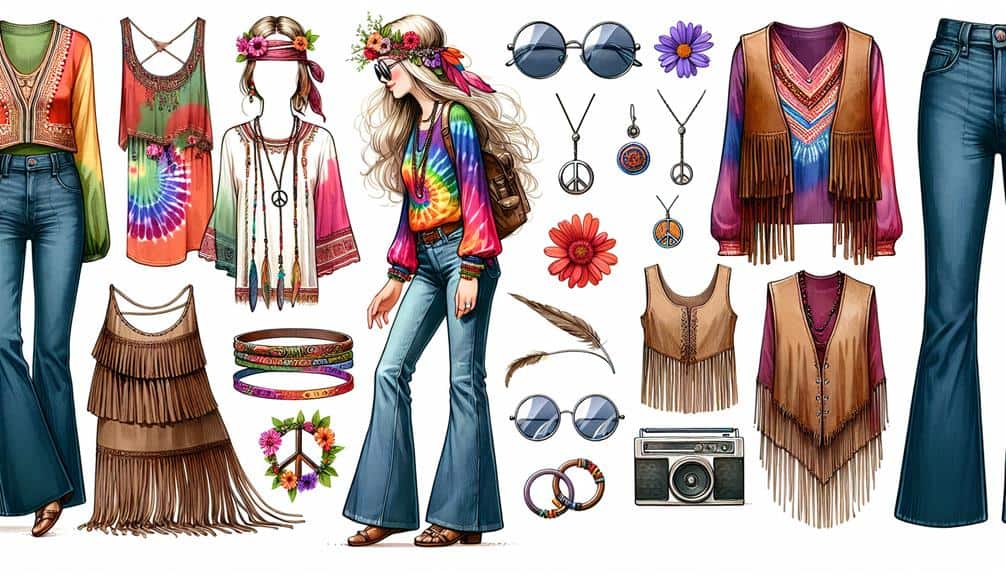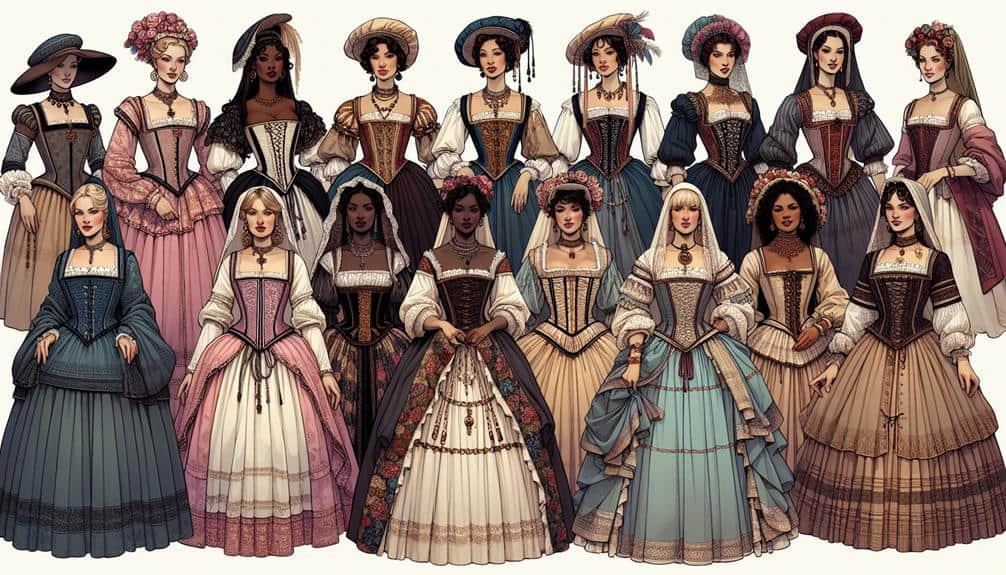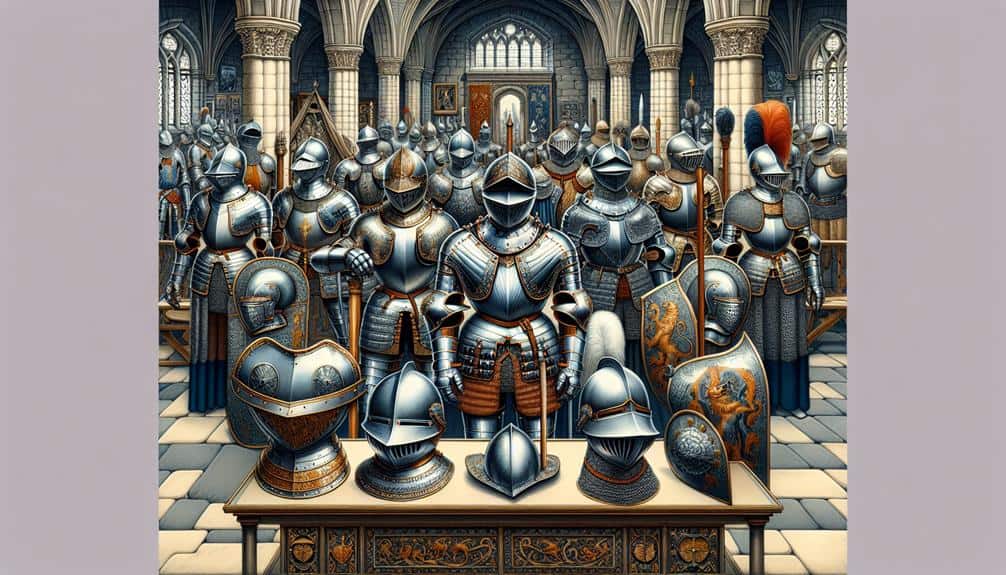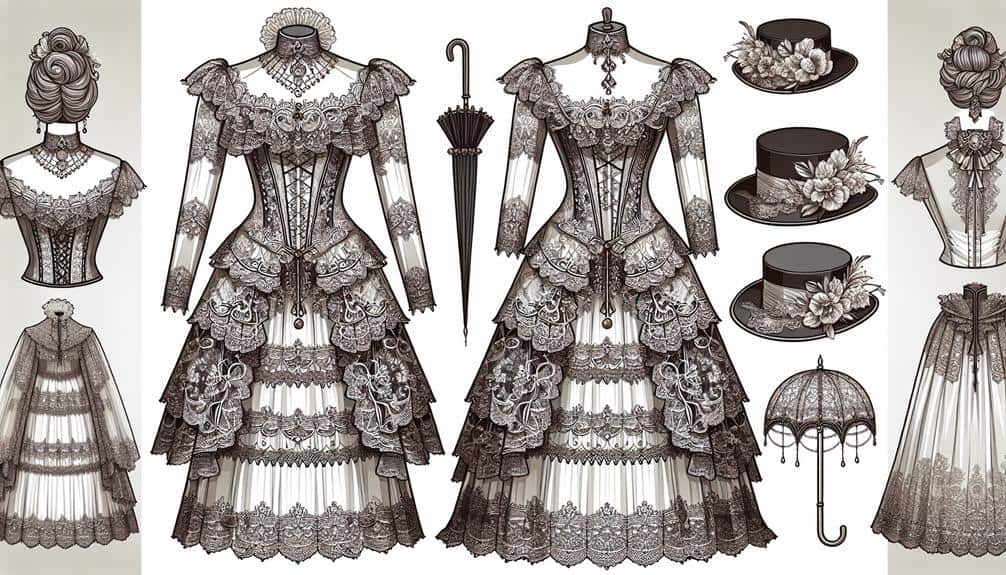Are you intrigued by the enigmatic allure of the 1960s hippie flower child ensemble, where fashion intertwined with social movements in a harmonious dance?
Exploring the defining elements of this iconic style may reveal a tapestry of colors, textures, and ideals that captivated a generation seeking freedom and self-expression. From fringe vests to tie-dye shirts, from peace sign jewelry to flower crowns, each piece carried a message of rebellion and peace.
But what truly set this era's fashion apart, and how did it reflect the values and aspirations of the time?
Key Takeaways
- Loose, flowy silhouettes and natural fabrics defined hippie fashion.
- Tie-dye shirts and paisley prints symbolized individuality and bohemian flair.
- Peace symbols and beaded headbands were iconic accessories reflecting values.
- Long, flowing hair, braids, and vibrant makeup represented the hippie ethos of peace and freedom.
Essential Elements of a Hippie Ensemble
To create an authentic 1960s Hippie Flower Child Ensemble, you must include essential elements that capture the free-spirited and colorful essence of the era. The Bohemian influences of the time were characterized by a vintage revival, embracing a mix of ethnic and folk elements. Incorporating these into your ensemble can be achieved through loose and flowy silhouettes, often layered for a carefree look typical of the era.
Psychedelic prints were a hallmark of 1960s fashion, reflecting the era's experimentation with bold colors and abstract patterns. Choosing garments with vibrant and swirling designs can instantly transport your outfit back to the Flower Child era.
Opting for natural fibers such as cotton, linen, and hemp is essential when putting together a Hippie ensemble. These materials not only align with the era's emphasis on eco-friendliness and sustainability but also provide the comfort needed for a laid-back and bohemian style. Embracing the tactile and earthy qualities of natural fibers adds an authentic touch to your ensemble, ensuring it embodies the true spirit of 1960s Hippie fashion.
Signature Fabrics and Patterns
During the vibrant 1960s, signature fabrics and patterns played a pivotal role in defining the iconic Hippie Flower Child look, embodying a fusion of cultural influences and artistic expressions. When exploring the fabrics and patterns that characterized this era, two key elements stand out:
- Tie Dye Shirts: Tie dye shirts were a staple in the Hippie Flower Child ensemble. This psychedelic coloring technique involved twisting, folding, and tying fabric before applying different colored dyes, resulting in vibrant and swirling patterns that symbolized freedom and individuality.
- Paisley Prints: Paisley prints were another popular choice among the Flower Children. This intricate and teardrop-shaped pattern originated in India and became synonymous with the counterculture movement of the 1960s. The swirling designs and vibrant colors of paisley prints adorned everything from clothing to accessories, adding a touch of bohemian flair to each ensemble.
These fabrics and patterns not only reflected the Hippie Flower Child's rejection of mainstream fashion but also served as a visual representation of their values and beliefs.
Iconic Accessories and Jewelry
Amidst the vibrant 1960s Hippie Flower Child movement, a plethora of iconic accessories and jewelry pieces emerged, each carrying its own symbolic significance and adding a unique touch to the ensemble. The peace symbol, a universal emblem of the era's anti-war sentiment and love for peace, was a staple accessory worn by many. This symbol was often seen on necklaces, bracelets, and earrings, serving as a powerful statement piece.
Beaded headbands were another popular accessory that adorned the heads of many Flower Children. These headbands, often handmade with colorful beads and intricate patterns, added a bohemian flair to the ensemble. They were worn across the forehead, echoing a sense of free-spiritedness and connection to nature.
The jewelry of the 1960s Hippie Flower Child ensemble reflected the values and beliefs of the counterculture movement. The peace symbol and beaded headbands not only accessorized outfits but also served as visual representations of peace, love, and unity among individuals who embraced the Hippie lifestyle.
Hair and Makeup Trends
The shift from iconic accessories and jewelry to hair and makeup trends within the 1960s Hippie Flower Child ensemble encapsulates a transformation in self-expression and cultural identity. Embracing bohemian hairstyles and psychedelic makeup was a way for individuals to rebel against societal norms and express their inner creativity. Here are some key trends that defined the hair and makeup styles of the era:
- Bohemian Hairstyles
- Long, flowing locks were a popular choice among hippies, symbolizing a connection to nature and freedom.
- Braids, beads, and flowers intertwined in the hair created a whimsical and carefree look.
- Psychedelic Makeup
- Vibrant colors like blues, purples, and greens were used to create bold eye looks that mirrored the psychedelic art of the time.
- Glitter and shimmer were often added to the eyes and cheeks for a dazzling effect.
These trends not only reflected the hippie ethos of peace, love, and freedom but also served as a form of artistic expression and rebellion against mainstream beauty standards.
Cultural and Historical Influences
Cultural and historical influences permeated the 1960s Hippie Flower Child ensemble, shaping its unique identity and societal impact. The counterculture movement of the era played a significant role in defining the Hippie Flower Child style. Rejecting mainstream norms, hippies embraced a bohemian aesthetic characterized by flowing fabrics, colorful patterns, and a laid-back attitude towards fashion influences. This rebellion against traditional dress signaled a broader shift towards individualism and self-expression.
Additionally, the Hippie Flower Child ensemble was closely intertwined with social activism. Hippies often used their clothing as a form of protest, donning tie-dye shirts and peace signs to express their anti-war sentiments and promote love and unity. The ensemble became a visual representation of the values and beliefs held by the counterculture movement.
Music festivals, such as Woodstock, also played a pivotal role in shaping the Hippie Flower Child ensemble. These gatherings served as a platform for self-expression and community building, where individuals showcased their unique style while coming together to celebrate peace, love, and music. The fusion of fashion, social activism, and music festivals defined the 1960s Hippie Flower Child ensemble and left a lasting impact on popular culture.
Frequently Asked Questions
Where Can I Purchase Authentic Vintage 1960s Hippie Clothing and Accessories?
Embark on a journey to find your retro soul in vintage boutiques and online shops. Discover the essence of the '60s with authentic hippie clothing and accessories. Embrace bohemian style and unleash your inner flower child.
What Were the Typical Shoe Styles Worn by Hippies in the 1960s?
For your 1960s hippie look, embrace the era's footwear styles. Hippies favored Bohemian sandals for a free-spirited vibe and tie-dye sneakers for a playful touch. These shoes complemented the colorful and laid-back essence of the hippie fashion movement.
Did Hippies in the 1960s Follow Any Specific Ethical or Sustainable Fashion Practices?
To embody the ethical values embraced by 1960s hippies, you might have opted for eco-friendly practices like upcycling and recycling clothes. Vintage finds were cherished, reflecting a sustainable approach to fashion that resonated with the counterculture movement.
How Did the Hippie Fashion Movement Influence Mainstream Fashion Trends of the Era?
In the 1960s, the hippie fashion movement's influence on mainstream fashion trends was profound. Counterculture ideals infiltrated runways and pop culture, challenging the traditional norms upheld by the fashion industry, sparking a shift towards more expressive and free-spirited designs.
Were There Specific Regions or Cities That Were Known for Having a Strong Hippie Fashion Presence in the 1960s?
In the 1960s, specific regions like San Francisco and cities such as New York and London were known as fashion hubs for the strong hippie presence. Their cultural impact influenced fashion evolution with unique styles.



